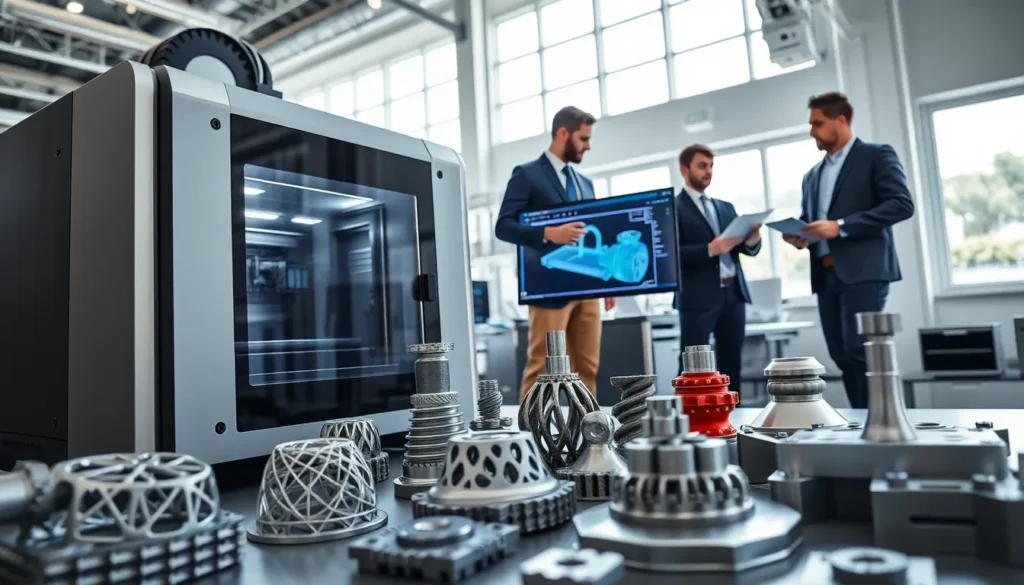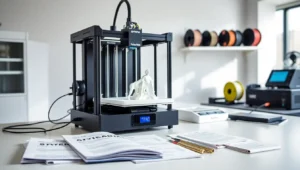In a world that’s constantly evolving, 3D printing has taken the manufacturing landscape by storm, and DMLS 3D printing is leading the charge with its impressive capabilities. But what exactly is DMLS? Imagine being able to create complex metal parts layer by layer, sounds like something out of a sci-fi movie, right? Well, buckle up as we jump into the intriguing realm of DMLS, where creativity meets engineering. This isn’t just another tech buzzword: it’s a revolution in how we approach manufacturing.
Table of Contents
ToggleWhat Is DMLS 3D Printing?

Direct Metal Laser Sintering (DMLS) is a pioneering 3D printing technology specifically tailored for metals. In simple terms, it allows engineers and designers to produce intricate metal components by melting powdered metal with a laser. While traditional manufacturing methods can restrict design freedom and are often cumbersome, DMLS flourishes where creativity meets practicality, enabling the production of parts that would be difficult or impossible to achieve with conventional techniques. Essentially, it’s like wielding a magic wand that makes metal components appear, one layer at a time.
The DMLS Process Explained
The DMLS process is both fascinating and complex. It all begins with a 3D model, typically created through CAD software. Once the design is finalized, it undergoes slicing into thin layers. Next, the magic happens: a high-powered laser melts the powdered metal, which fuses together to form solid parts. Each layer is meticulously layered atop the previous one, building up the object until it’s complete. After printing, the component typically goes through a post-processing phase, which may include heat treatment or surface finishing.
Step-by-Step Breakdown
- 3D Model Creation: Designers create the desired component using CAD software.
- Slicing: The model is sliced into thin cross-sections.
- Layering: A powdered metal is spread in a thin layer.
- Laser Melting: A laser selectively melts the powder to form the part.
- Cooling and Removal: The object cools down, and the part is removed from the powder bed.
- Post-Processing: Additional treatments ensure optimal mechanical properties.
Materials Used in DMLS 3D Printing
DMLS is versatile when it comes to materials. Commonly used metals include stainless steel, titanium, aluminum, and cobalt-chrome. Each of these materials is chosen based on the specific demands of the application. For instance, titanium is favored in aerospace for its impressive strength-to-weight ratio, while cobalt-chrome shines in medical applications due to its biocompatibility.
Exploring Popular Metal Choices
- Stainless Steel: Known for its corrosion resistance, it’s a go-to for numerous applications.
- Titanium: Not only is it strong, but it’s also lightweight, making it ideal for aerospace and medical fields.
- Aluminum: Loved for its weight and thermal properties, it’s a popular choice for automotive parts.
- Cobalt-Chrome: This material offers excellent wear resistance, crucial in the creation of dental and orthopedic implants.
Applications of DMLS 3D Printing
DMLS 3D printing is making waves in multiple industries. From aerospace and automotive to medical and industrial sectors, its applications are broad and varied. For instance, in aerospace, DMLS allows for the production of lightweight, high-strength components that can withstand extreme conditions. In the medical field, personalized implants tailored to individual patients are becoming a reality thanks to this technology. But that’s just the tip of the iceberg.
Advantages of DMLS 3D Printing
The benefits of DMLS are numerous. First, it allows intricate designs that traditional methods can’t achieve. Second, DMLS minimizes waste, as it only uses the material required for a given component. Also, the speed of production is striking, especially for small quantities. The ability to rapidly prototype and iterate designs ensures companies can adapt quickly to market needs.
Key Benefits Include:
- Design Freedom: Complex geometries become possible.
- Material Efficiency: Reduces waste associated with traditional machining.
- Rapid Prototyping: Quickly iterate on designs to refine functionality.
Challenges and Limitations of DMLS 3D Printing
While DMLS boasts numerous advantages, it’s not without its challenges. One significant issue is the cost of equipment and materials, which can be prohibitive for smaller companies. Also, technical know-how is needed to operate these sophisticated machines effectively. Another limitation is the build size: DMLS machines have restrictions on the maximum dimensions of parts, which can curtail applications for larger components.
Future Trends in DMLS 3D Printing Technology
Looking forward, DMLS 3D printing technology is poised for exciting advancements. As software continues to evolve, designers will have even greater tools at their disposal for creating intricate geometries. Also, the materials science field is rapidly progressing, which means new and improved metal alloys specifically developed for DMLS will emerge. Another trend to watch is the move towards sustainability, as manufacturers strive to reduce their environmental footprint.





